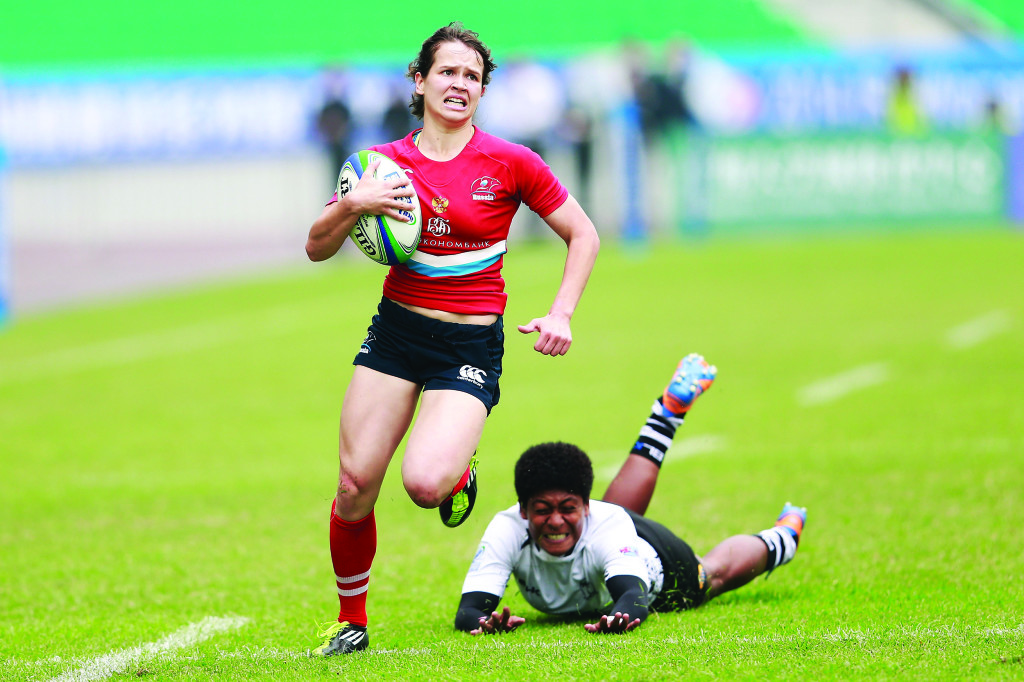
Despite some spirited attempts at self-destruction (Australian Rugby axing the Force, the RWC 2023 host selection controversy) Rugby Union is in a buoyant state with World Rugby well on their way to achieving their goal of a truly global game.
Nothing will ever touch football as the world’s dominant sporting code but rugby is certainly laying a solid claim to No2 on the team-sport pecking order, rivaling cricket and basketball.
A small but significant event happened in the last week that brings this fact home – the English premiership secured a deal for free-to-air broadcasting in China, a move that gives them potential audience reach of 400 million households.
“This is a very significant day in the history of Premiership Rugby,” said Dominic Hayes, Premiership Rugby’s commercial director. “Launching free-to-air TV in China is part of our strategic goal of increasing the global impact of Premiership Rugby and helping to grow the game in new countries around.”
The contract even includes Mandarin commentary for live games and a weekly highlights show.
Much of the credit to the growth of the game goes down to three factors – the popularity of Sevens rugby (helped by Olympic exposure), the sky-rocketing growth of Women’s rugby (a highly successful Women’s Rugby World Cup was held in Ireland this year) and an attractive style of play seen in most tournaments across the globe.
Rugby is getting faster and the players fitter and more skillful. The All Blacks, so long the bench mark for the game, have shown the rest of the world what can be achieved if you play positive, ball in hand rugby. Fans love it and in New Zealand’s case it brings results, as well as making for breath taking highlights reels.
World Rugby also needs to be congratulated for promoting a more spectator-friendly game through some subtle rule changes and careful management of referees.
Next time you watch a Test match just observe how the decisions seem to go in favour of the team playing the most positive style of rugby. It’s no accident. The referees are just following World Rugby directives.

Nadezda Kudinova of Russia is a star on the Women’s Sevens circuit.
Men’s and women’s Sevens rugby has of course played a huge part in making rugby more attractive, helping to develop individual skills not only with ball in hand but at the breakdown, which remains a crucial part of both Sevens and Fifteens.
But the one real challenge that Rugby faces, and one that World Rugby are acutely aware of, is player welfare.
It’s interesting to note that of the world’s top ten team sports, as recently graded by TotalSportek.com, there are only three that involve a high degree of physical contact (i.e. collisions): rugby, ice hockey and American football.
And as rugby players get fitter, faster and indeed bigger – the collisions become more destructive. It makes for a better quality game – the All Blacks of today would have beaten the All Blacks of 1917 by 100 points – but also it takes a greater physical toll on players, especially where concussion is concerned.
World Rugby are to be complemented for all the work they are putting into this area, especially in regard to their new HIA (Head Injury Assessment) Protocol, which is in stark contrast to the NFL, which tried to pretend brain injuries didn’t exist for many years with devastating consequences.
But whatever steps World Rugby takes, and the new tougher regulations around head contact of any kind (accidental or deliberate) are commendable, they can not take it out of the game entirely.
This is rugby’s challenge: how do you make the game safer for players without making it any less thrilling for fans – and the sight of big men running into big collisions has a definite appeal to rugby fans.
It may not be tiddlywinks, as Tana Umaga once famously commented, but if rugby is to continue its impressive global growth, especially among younger players, it needs also not to be a bloodsport.